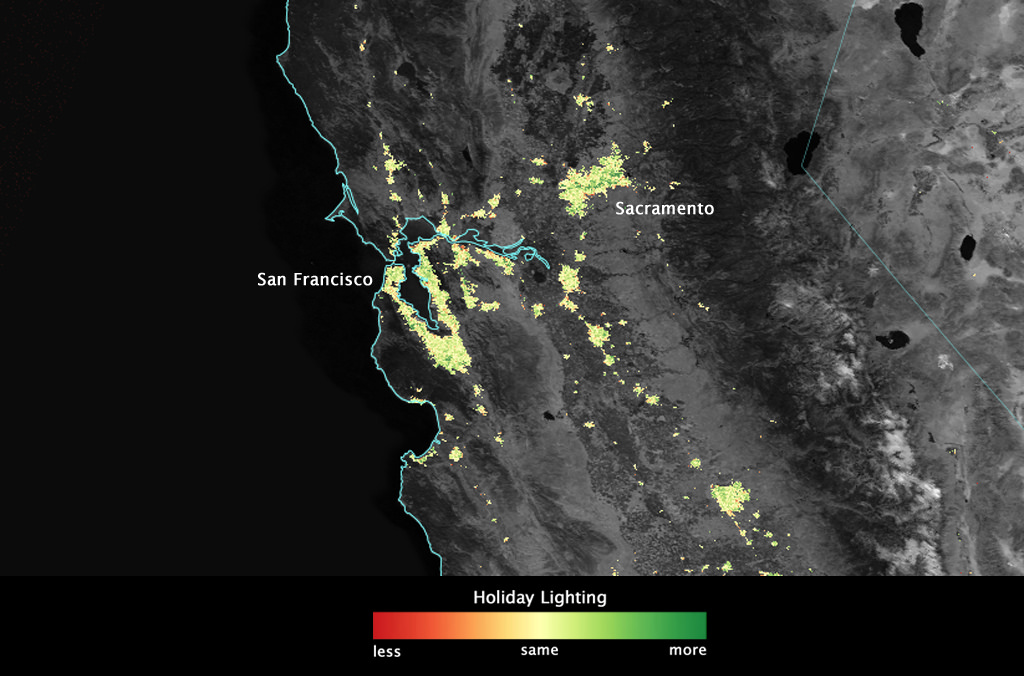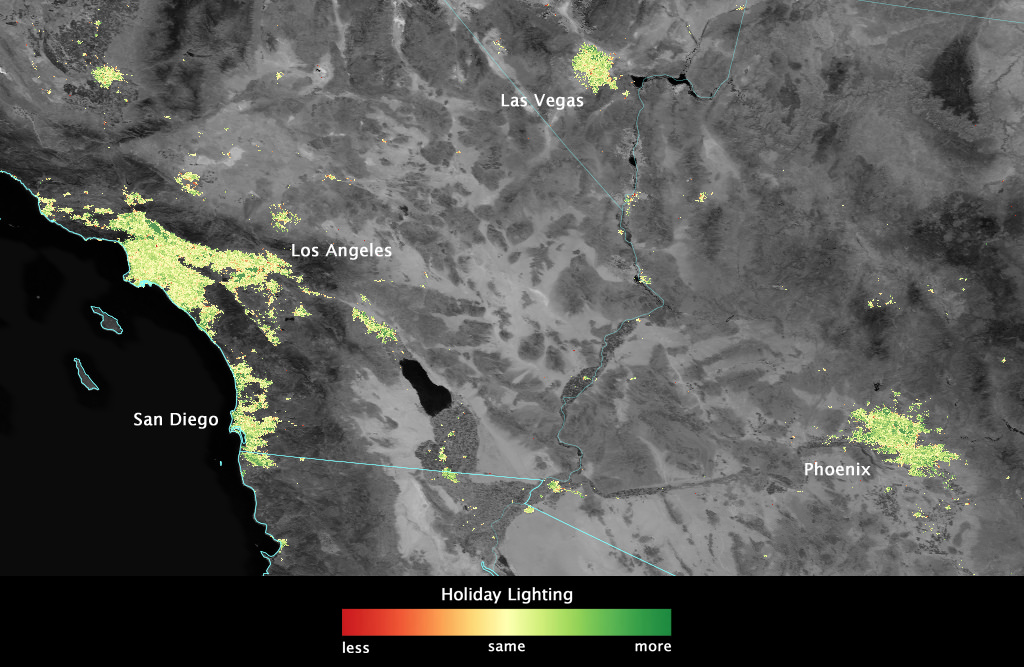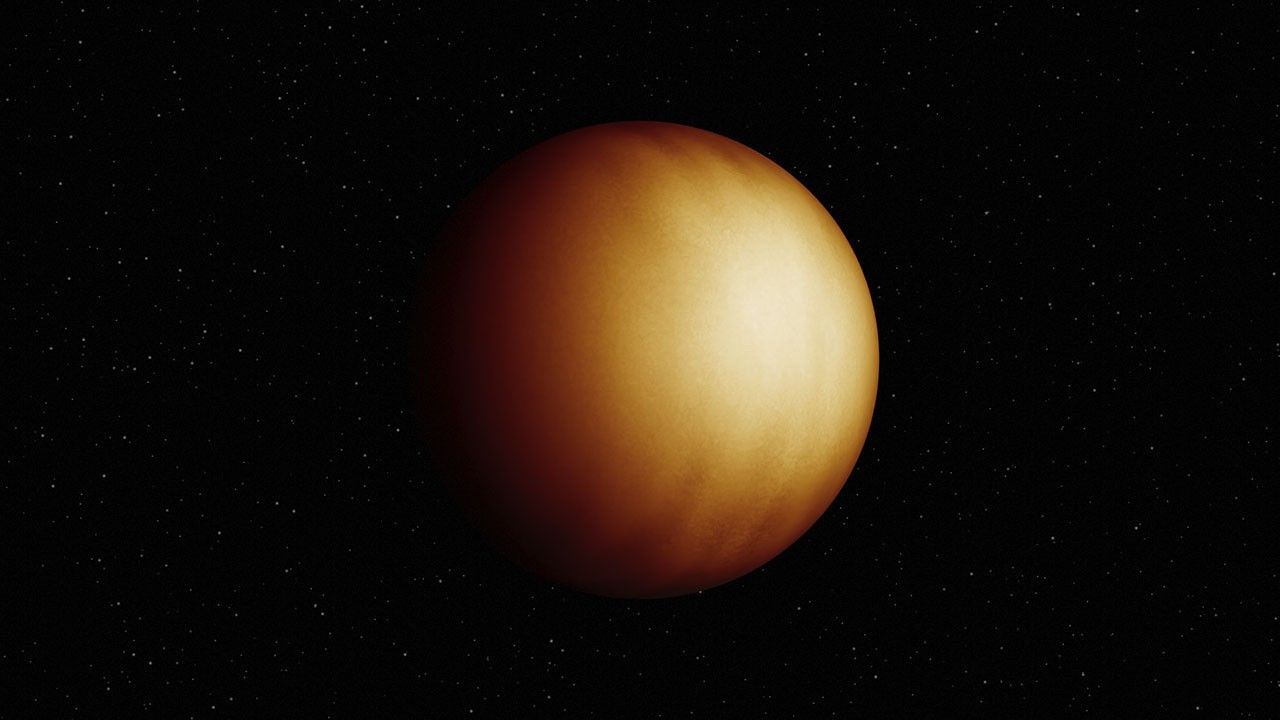Holiday Lights From Space: Satellite Sees Cities Brighten (Photos)

SAN FRANCISCO — Cities around the world brighten considerably during the holiday season, surprising new images from space reveal.
City lights across the United States blaze 20 to 50 percent more brightly in December than they do the rest of the year, and some cities in the Middle East brighten by more than 50 percent during the Muslim holy month of Ramadan, researchers said.
"What's happening during the holidays is that our patterns are changing," study co-leader Miguel Roman, of NASA's Goddard Space Flight Center in Greenbelt, Maryland, said during a press conference Tuesday (Dec. 16) here at the annual fall meeting of the American Geophysical Union. [Gallery: Holiday Lights From Space]
"People are leaving work for the holiday, and they're turning on the lights," he said, adding that scientists had previously thought that nighttime lights were relatively stable throughout the year. "People are demanding more energy services, and we see that embedded in this data."
Roman and his colleagues analyzed data collected in 2012 and 2013 by the Visible Infrared Imaging Radiometer Suite (VIIRS) instrument aboard the Suomi NPP (National Polar-orbiting Partnership) satellite, a joint mission involving NASA and the U.S. National Oceanic and Atmospheric Administration.
The researchers developed a new algorithm that filtered out clouds and moonlight in the VIIRS data, allowing them to isolate city lights and track how they changed over time. Snow was too reflective for the algorithm to handle, however, so the team looked at 70 warm American cities, all south of St. Louis.
Every one of the 70 (as well as cities and towns throughout Puerto Rico, an unincorporated territory of the United States) lit up just after Thanksgiving and blazed brightly through Jan. 1, Roman said.
Breaking space news, the latest updates on rocket launches, skywatching events and more!
"This is telling us something that we all as Americans know, which is that Christmas is not just a religious holiday; it is also a civic holiday," he said. "This space-based retrieval is tracking this national tradition. It's amazing."
The same pattern was also observed throughout the Middle East — but the holiday of note in this region is Ramadan, the ninth month in the Islamic calendar. Many Muslims fast during the daylight hours throughout Ramadan, delaying meals and a number of other activities until nightfall.
Cities in Muslim countries such as Jordan and Egypt exhibited the brightness spike during Ramadan while the lights in neighboring Israel remained stable throughout the year, showing that the VIIRS data can track cultural differences, researchers said.
The effects of geopolitical conflicts can also be observed. For example, the satellite data revealed a 94 percent drop in the nighttime brightness of the Syrian city of Aleppo just after a major battle began there on July 19, 2012, during the country's ongoing civil war.
"These nighttime lights really are in some ways the EKG of a city," said study co-leader Eleanor Stokes, a Ph.D. candidate at Yale University.
The new results — and the approach developed by the research team — could help scientists better understand energy demand, which in turn may lead to better climate change mitigation strategies down the road, Stokes added.
"What we found here is that energy service demand is the aggregate of human activity, and human activity is driven not just by individual factors like price — like energy and electricity prices — but also, activity is driven by social and cultural context," she said. "When you look at the energy signatures, you can see those imprints, those cultural and social imprints."
Follow Mike Wall on Twitter @michaeldwall and Google+. Follow us @Spacedotcom, Facebook or Google+. Originally published on Space.com.
Join our Space Forums to keep talking space on the latest missions, night sky and more! And if you have a news tip, correction or comment, let us know at: community@space.com.

Michael Wall is a Senior Space Writer with Space.com and joined the team in 2010. He primarily covers exoplanets, spaceflight and military space, but has been known to dabble in the space art beat. His book about the search for alien life, "Out There," was published on Nov. 13, 2018. Before becoming a science writer, Michael worked as a herpetologist and wildlife biologist. He has a Ph.D. in evolutionary biology from the University of Sydney, Australia, a bachelor's degree from the University of Arizona, and a graduate certificate in science writing from the University of California, Santa Cruz. To find out what his latest project is, you can follow Michael on Twitter.



